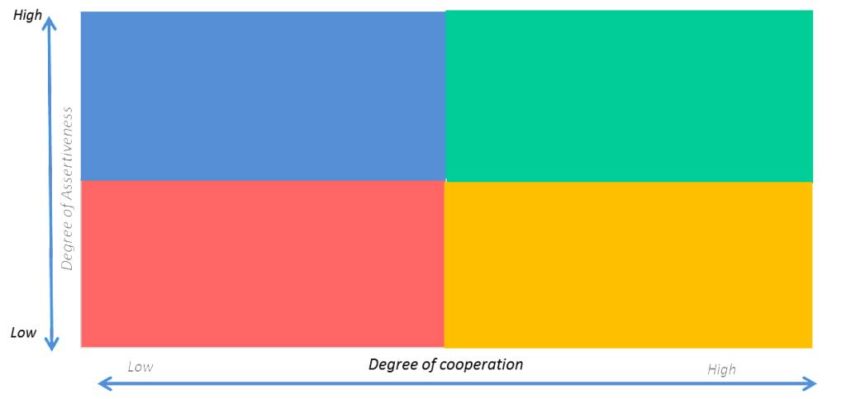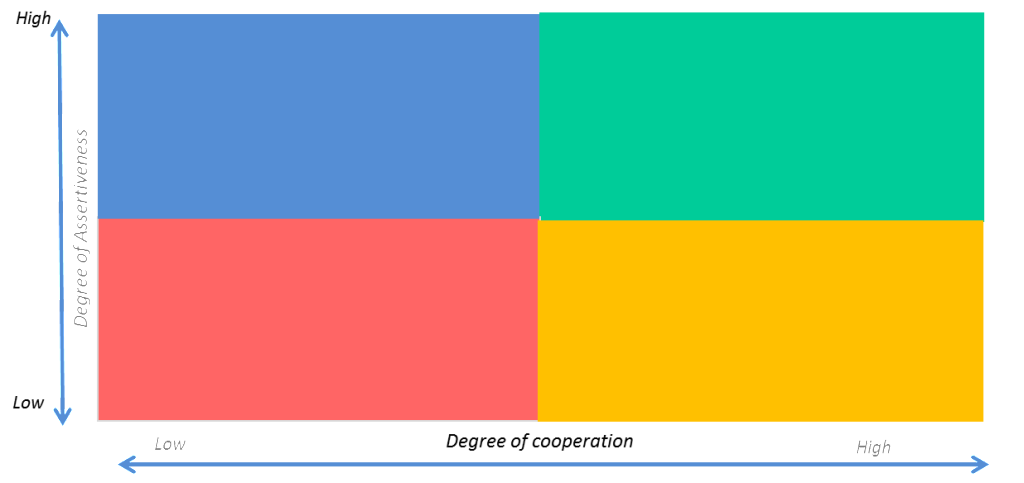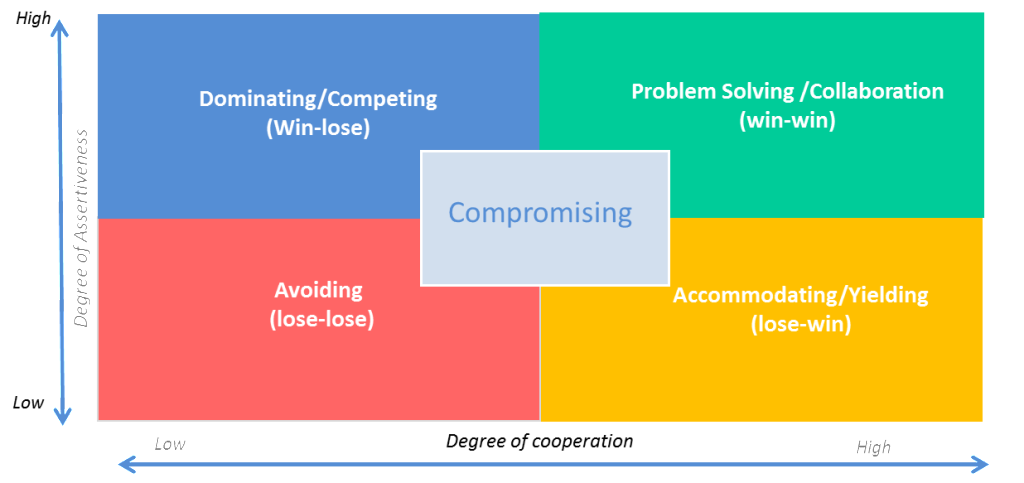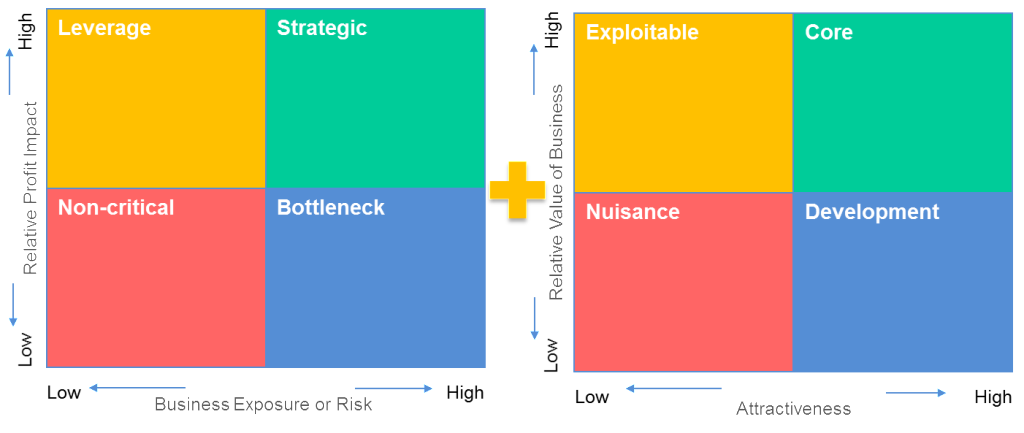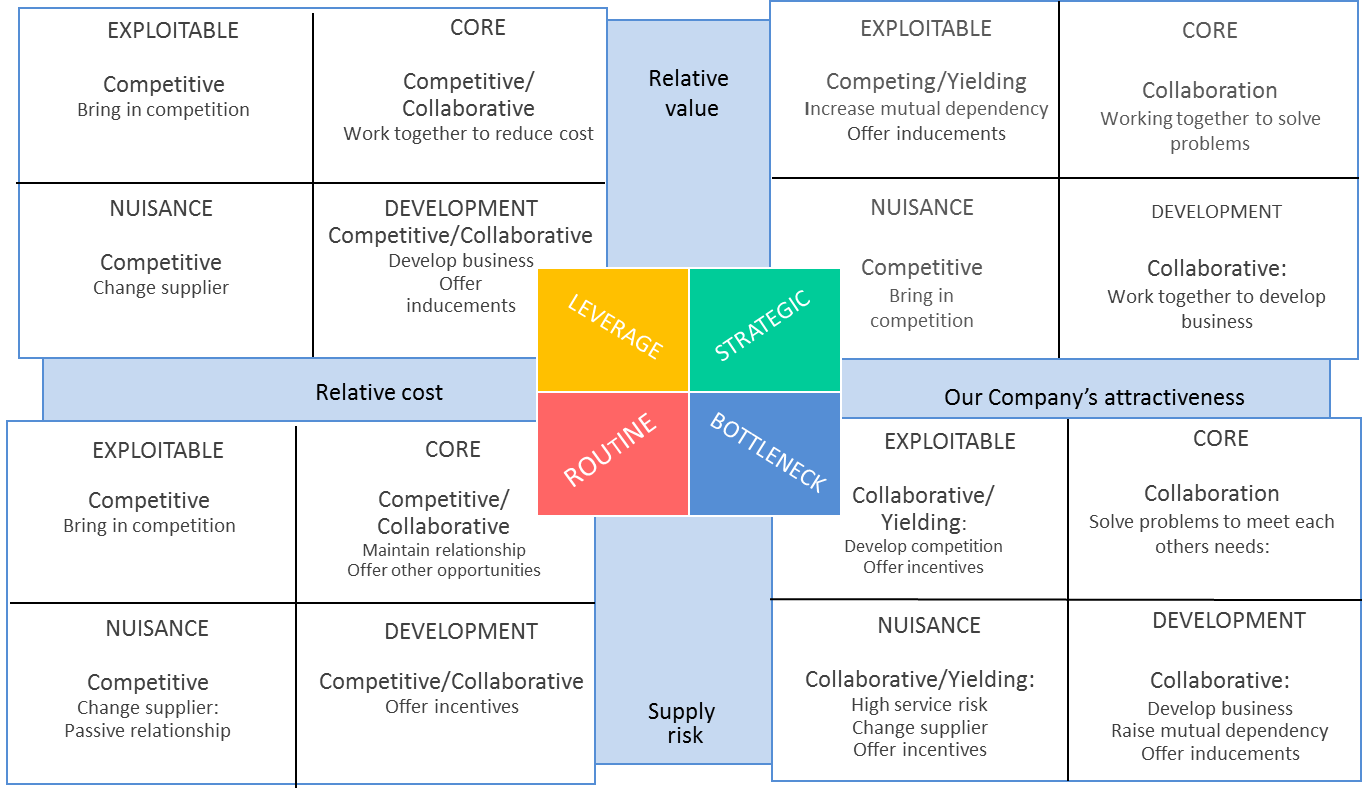Buyers must go beyond one trick negotiation strategies:
Developing Differentiated Negotiation Strategies
With much talk of buyers negotiating aggressively, we explain how buyers can adopt appropriate negotiating behavior, by developing differentiated negotiation strategies.
When reading articles such as this one in Forbes, you would think that buyers don’t have the knowledge or the tools to negotiate more strategically. But what does it mean to negotiate strategically?
1. What is a Negotiation Strategy?
A negotiation strategy is your plan of attack of how you plan on interacting with the supplier, and how you plan on moving your interests forward, and advancing your interests in the negotiation.
2. Negotiation Styles:
When developing negotiation strategies, a well-established tool is the negotiation-behavior matrix:
The matrix builds on the premise that buyers have two motivations, or scenarios when negotiating with suppliers:
- One is to advance their interests or goals
- The competing pressure, is the level of cooperation
Buyers can view this as striking a balance between the outcome and the relationship.
2.1 Five strategic approaches:
If we combine these two pressures, it gives us five different approaches to handling a negotiation:
- If we’re high on asserting and low in cooperating, we’re said to be using a competing approach. We’re competing with the supplier– that is, we’re predominately thinking about our assertiveness, and we’re low on cooperating. So a distributive negotiation’s a good example of this.
- If we’re high on cooperating and low on asserting, then we’re using what’s called a yielding approach. We’re yielding to the suppliers interests. We’re largely cooperating with them, and we’re not asserting our interests.
- If we’re low on both-if we’re low on cooperating, and we’re low on asserting-then we’re essentially avoiding. We’re avoiding interaction.
- If we’re high on asserting and high on cooperating, we’re using what’s called a collaborating approach-that is, we’re in a cooperative, collaborative agreement. We’re high on asserting our interests, but we’re also concerned with an ongoing supplier relationship. So we’re high on both. We’re using a collaborating style.
- And somewhere in the middle, we’re using a compromise approach. And compromising is where we split the difference. We come up with an agreement that doesn’t work for either of us. It’s a compromise. And so it’s often an expedient type of agreement because we don’t have a lot of time, or it’s a short-term issue, or it’s not a major issue.
So we can talk about a part of negotiation strategy as being one of these five approaches:
- competing strategy
- collaborating strategy
- yielding strategy
- compromising strategy
- avoiding strategy
And that’s a really good way of starting to build a strategy framework, showing the strategies that buyers can adopt.
2.2 Negotiation strategies must build in flexibility:
But it is important to use the right strategy to match the specific scenario. Every situation is different. Therefore, it is important that buyers vary their negotiation style according to the supplier they are dealing with and the outcome they want from the negotiation.
Strategic buyers use the Kraljic Matrix and the Supplier Preferences table to define the category and supplier scenario:
- Buyers may be dealing with a very powerful dominant supplier and whose relationship is very important (Bottleneck), then it might be appropriate, to use a yielding strategy for that particular negotiation.
- In contrast, buyers may be negotiating on a very highly important category where the supplier relationship is of low-importance (Leverage), it might be appropriate to use a competing style.
The key lesson is that buyers must think about developing negotiation strategies that are appropriate to the scenario they are faced with.
3. Matching the style to both the current and desired relationship
Strategic buyers bring together the Kraljic Matrix and the Supplier Preferences table to evaluate the impact of the supplier’s view of the relationship as a part of their category strategy development. These come together to form a portfolio of possible relationships that when we overlay the Negotiation Behaviour Matrix, we produce a differentiated portfolio of negotiation strategies:
Within each quadrant the buyer must develop a planned predetermined approach, building in contingencies using ‘what if’ analysis:
- If the seller does( X), we will respond with (Y).
- If the seller does (A), we need to do (B).
So by planning in advance what the buyers argument would be, or what the next stage of your strategy will be buyer’s can prepare a sophisticated negotiation strategy, that is appropriate to the scenario and also takes account of what the supplier is doing.
4. Developing Differentiated Negotiation Strategies
Benefits
Such an approach provides a clear framework for buyers to select a scenario appropriate negotiation strategy, choosing to adopt either a distributive or integrative approach. By applying the negotiation behavior matrix to the existing portfolio of procurement’s four box matrix’s, buyers can ensure that sourcing, negotiation, and supplier relationship strategies are aligned and working in harmony towards the strategic goals of the organization to help define negotiation success.
Nuff said …
If you are interest in negotiation training contact us for a discussion.

